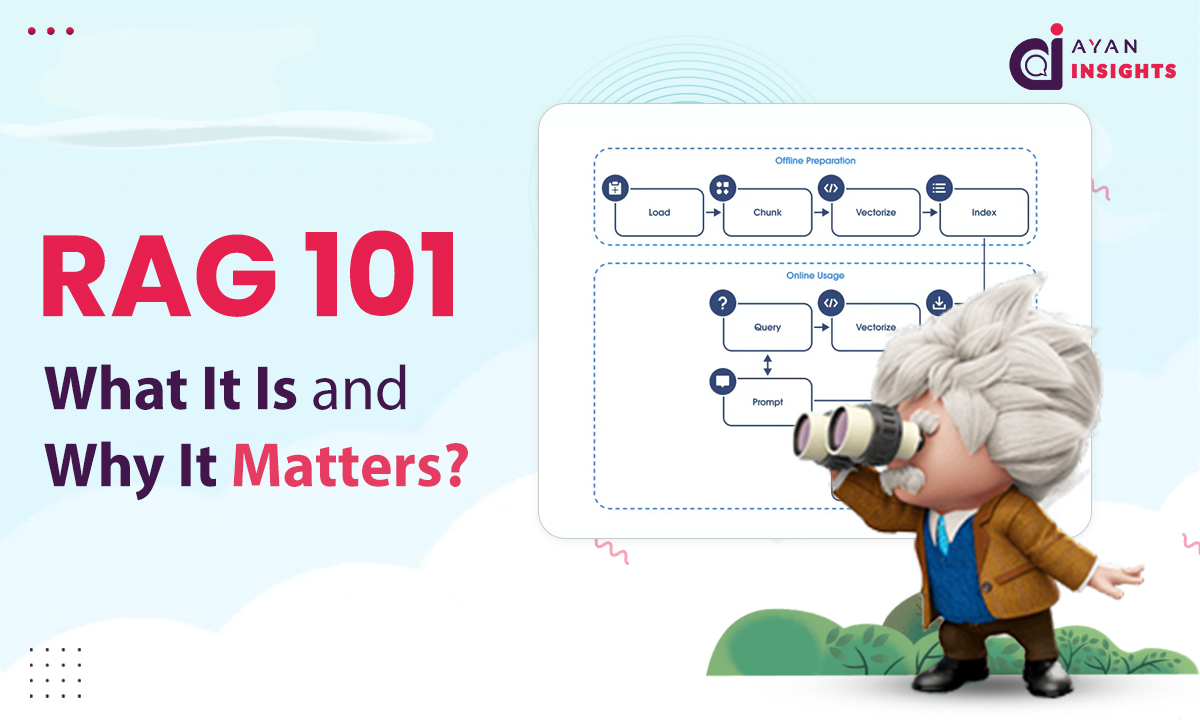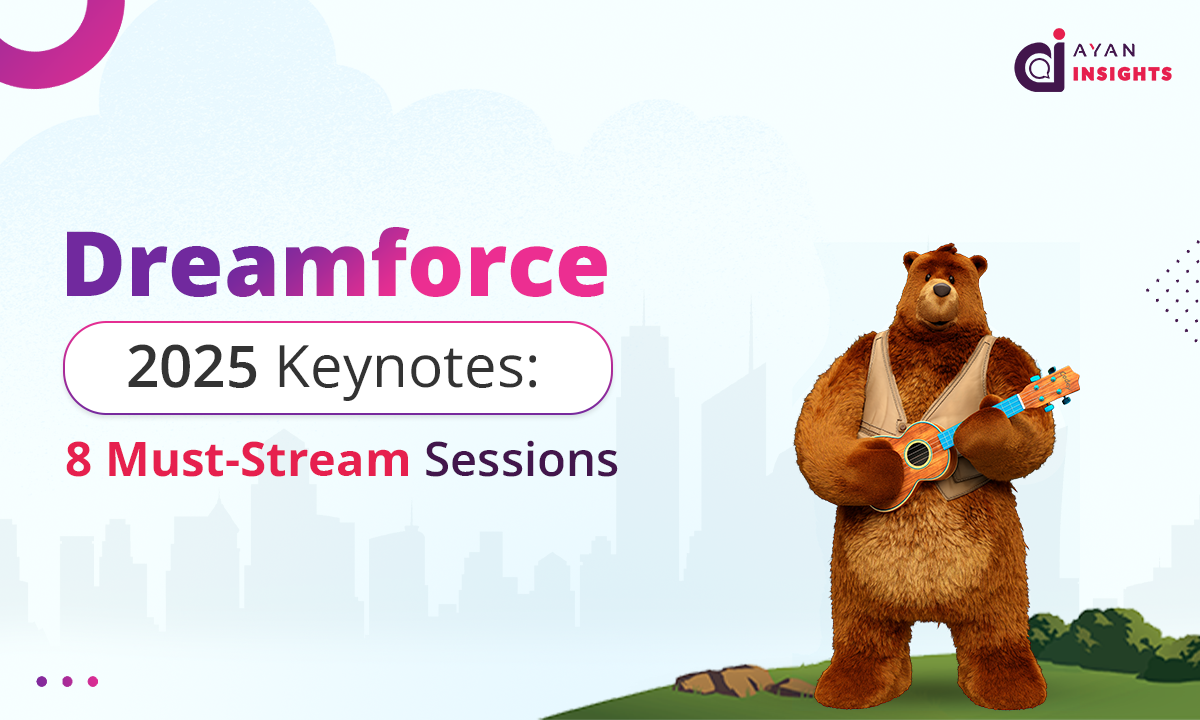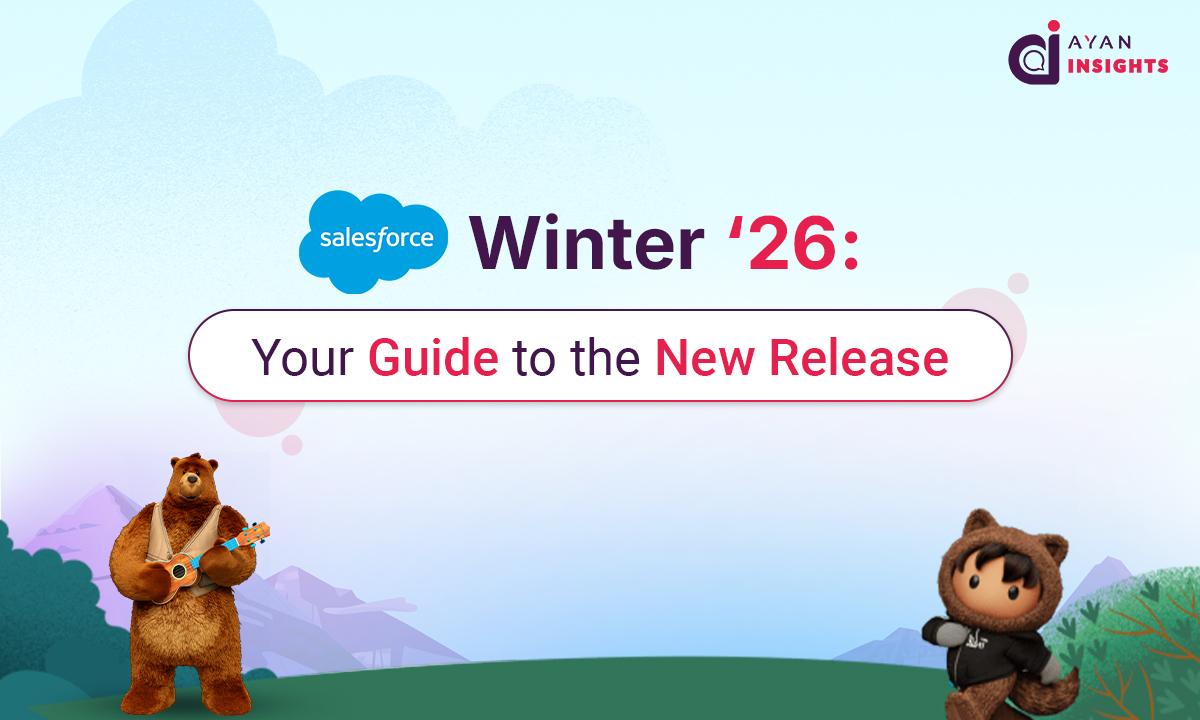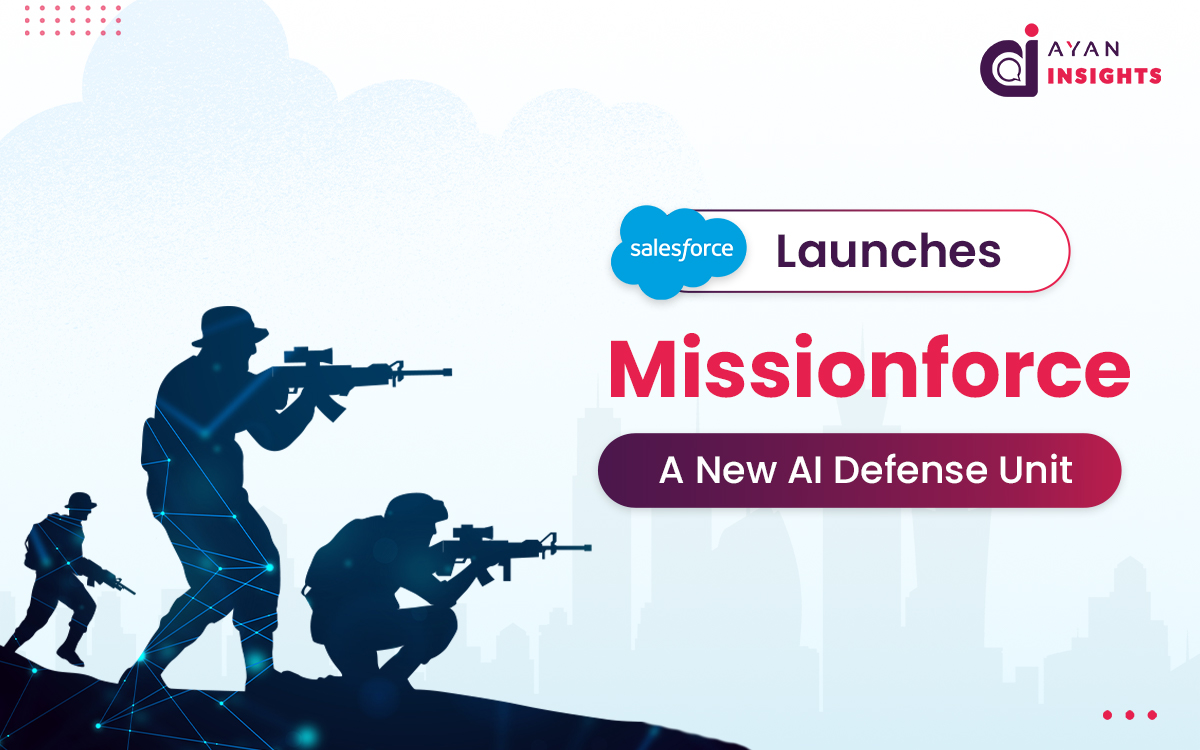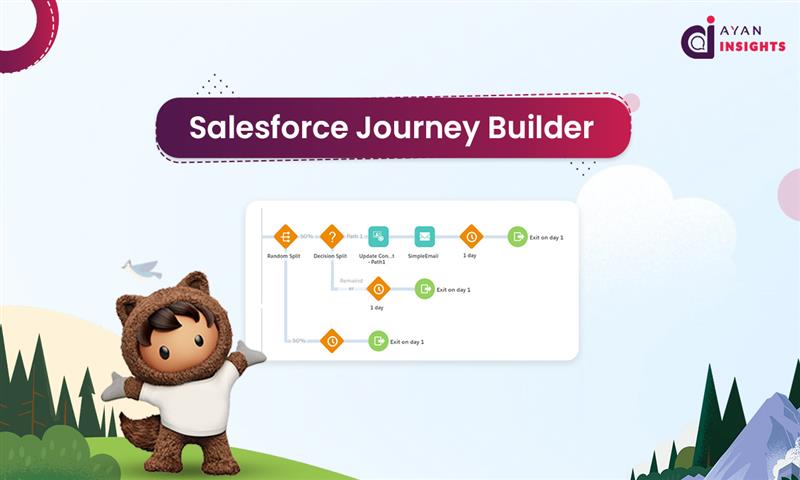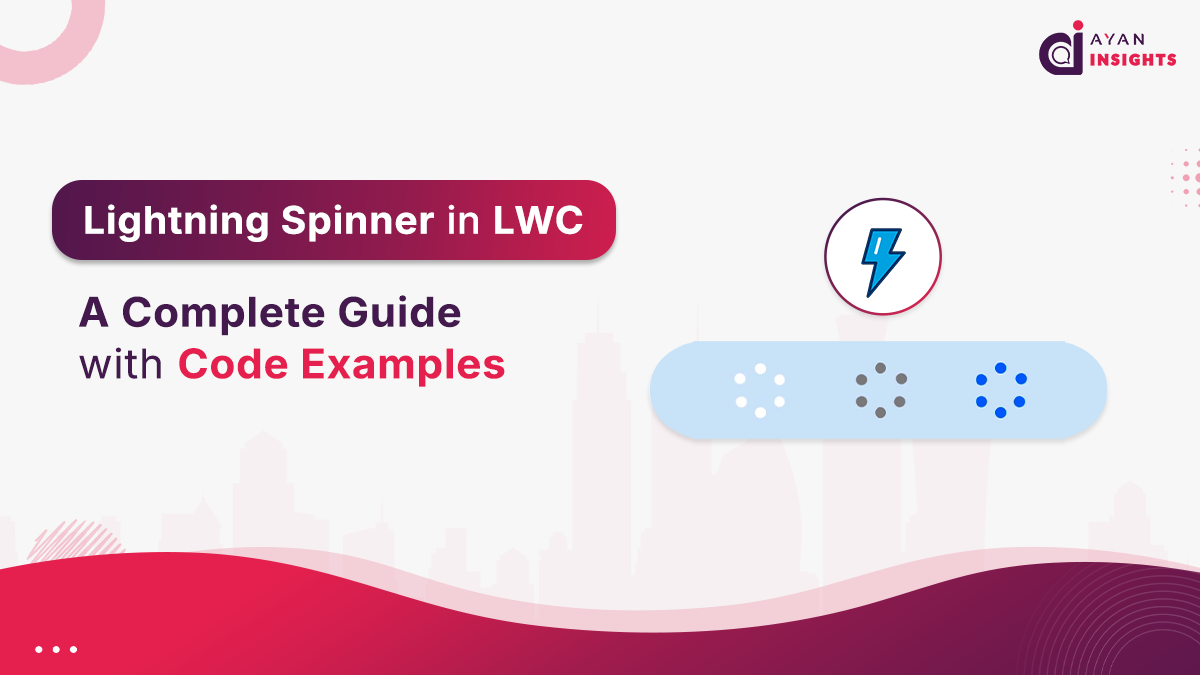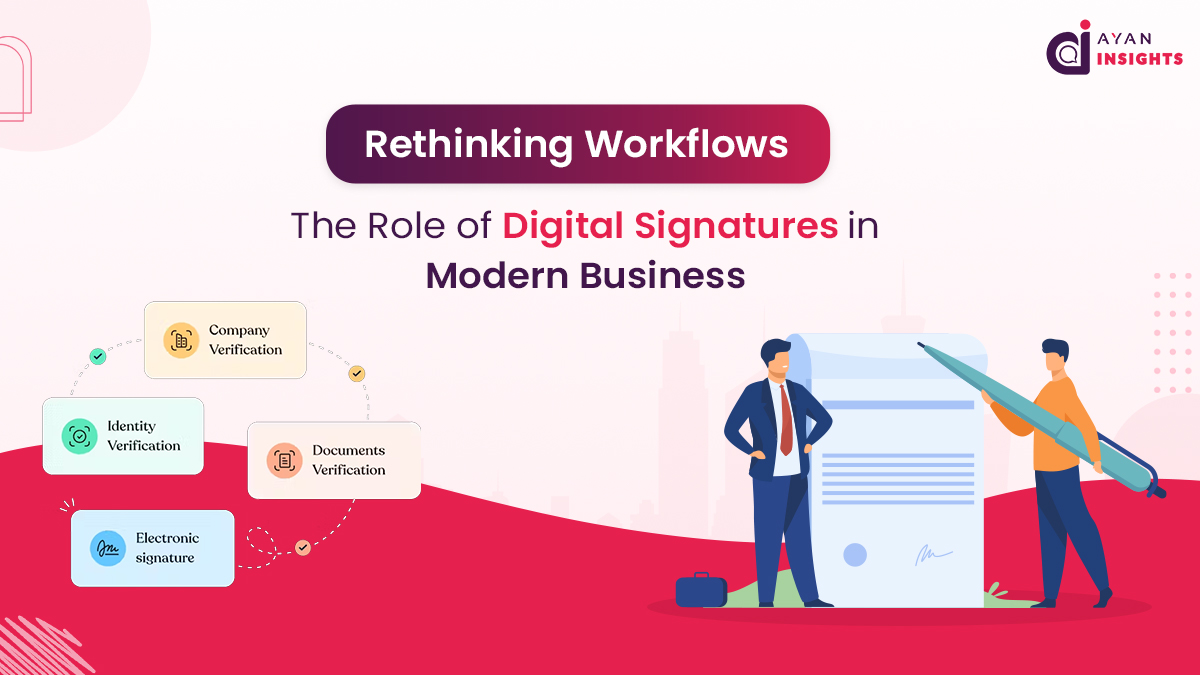Salesforce is increasingly adopting advanced AI architectures like Retrieval-Augmented Generation (RAG) within its Einstein 1 Platform. By grounding AI outputs in real-time CRM data, Salesforce ensures Einstein Copilot and Agentforce deliver responses that are accurate, contextual, and up-to-date — not limited by static training data.
The Core Idea Behind RAG
At its core, Retrieval-Augmented Generation (RAG) combines two powerful abilities: finding information and creating natural language responses. You can think of it as an AI that doesn’t just guess from memory – it takes a moment to “look things up” before answering. When a question comes in, the system first searches trusted sources, such as documents, databases, or articles, to gather the most relevant details. It then feeds this information into the language model, which uses it to build a clear and accurate reply. This approach makes the AI smarter, more reliable, and better grounded in real-world knowledge.

The Workflow in Action
Here’s an example of how RAG works in practice:
- A user asks a question – “What’s the latest update on electric vehicle tax credits?”
- The retrieval system goes to work – It quickly scans reliable sources, such as government websites, official reports, and recent news articles.
- The AI model processes the information – It reads what was found, understands the context, and combines it with its own language skills.
- A final answer is produced – The response is clear, accurate, and linked to trustworthy sources, so the user knows where the information came from.
This step-by-step process shows why RAG is powerful: it delivers answers that aren’t just well-written, but also up to date and reliable – perfect for situations where accuracy really matters.
Also Read
Don’t forget to checkout: AgentExchange Hits a Milestone of 100 Apps Published.
Business Impact of RAG
RAG is more than a behind-the-scenes upgrade -it creates real value for businesses:
- Accuracy: Answers are grounded in verified data, which means fewer mistakes or “hallucinations.”
- Freshness: Responses stay current because the AI can pull from the latest information instead of relying only on old training data.
- Trust: Users can see where the information comes from, making it easier to rely on the results.
- Productivity: Employees and customers spend less time searching for answers and more time acting on them, reducing costs and improving overall efficiency.
By combining these benefits, RAG helps organizations build smarter tools that support better decision-making and stronger customer experiences.
Everyday Uses of RAG
We’re likely already interacted with RAG-powered systems without realizing it:
- Customer support bots that pull from company knowledge bases to answer questions instantly.
- Healthcare assistants that reference medical research and clinical guidelines.
- E-commerce platforms that explain product features using verified details.
- Enterprise dashboards that unify data from multiple systems into a single, clear response.
In all of these cases, RAG transforms raw data into actionable insights. Instead of static information sitting in a database, it delivers the latest, most accurate answers right when users need them.
Challenges and How to Tackle Them
RAG offers powerful benefits, but it’s not a plug-and-play solution. Organizations need to plan carefully to make it work effectively. Some common challenges include:
- Data quality: The system is only as good as the information it retrieves. If the sources are incomplete or unreliable, the answers will be too.
- Speed: Retrieval and processing must happen quickly so users don’t feel delayed. Slow responses reduce trust in the system.
- Security: When connecting AI to internal or sensitive data, strong safeguards are needed to prevent leaks or unauthorized access.
- Cost: Running searches, storing data, and maintaining infrastructure can become expensive without smart planning and optimization.
To succeed, companies must align RAG with their business goals – balancing accuracy, performance, and cost while protecting sensitive data.
Building RAG into Your AI Strategy
For businesses, adopting RAG is less about experimenting and more about building a foundation for long-term value. A good roadmap looks like this:
- Identify key knowledge sources – Decide which information matters most, whether it’s internal documents, external APIs, or structured databases.
- Choose the right retrieval tools – Options like vector databases or search platforms help ensure the system finds the most relevant content.
- Integrate with AI models – Connect retrieval systems with your language models so answers can be generated in real time.
- Test and refine – Use real user scenarios to check accuracy, speed, and security, then make adjustments as needed.
Looking ahead, RAG will continue to evolve with new capabilities:
- Multi-source retrieval: AI won’t just pull text, but also learn from PDFs, videos, and APIs.
- Personalized retrieval: Results tailored to individual users, shaped by preferences and context.
- Agent grounding: Autonomous AI agents tied to verified data, making them more reliable.
- Explainable AI: Every answer backed by visible sources, helping users understand where the information came from.
These advancements will make AI not only smarter but also far more trustworthy for everyday business use.
Conclusion
As Salesforce continues enhancing its AI ecosystem, RAG-based capabilities will play a key role in delivering trustworthy, data-driven insights directly from CRM systems. This makes it a foundational concept for anyone exploring the future of Salesforce AI.

